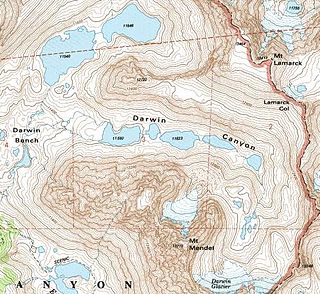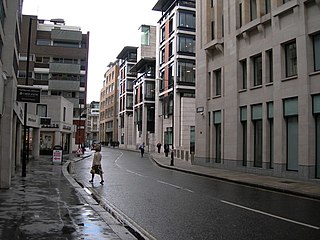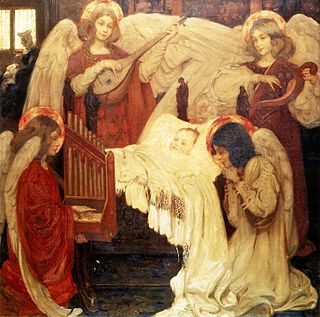Pater Noster , or the Lord's Prayer, is a prayer in Christianity.
Contents
Pater Noster or Paternoster may also refer to:
Pater Noster , or the Lord's Prayer, is a prayer in Christianity.
Pater Noster or Paternoster may also refer to:

The Sator Square is a two-dimensional acrostic class of word square containing a five-word Latin palindrome. The earliest Sator squares were found at several Roman-era sites, all in ROTAS-form, with the earliest discovery at Pompeii. The earliest square that included explicit additional Christian-associated imagery dates from the sixth century, and by medieval times Sator squares had been found across Europe, Asia Minor, and North Africa. In 2022, the Encyclopedia Britannica called it "the most familiar lettered square in the Western world".
In Catholic tradition, the Five Holy Wounds, also known as the Five Sacred Wounds or the Five Precious Wounds, are the five piercing wounds that Jesus Christ suffered during his crucifixion. The wounds have been the focus of particular devotions, especially in the late Middle Ages, and have often been reflected in church music and art.

In Christianity, worship is the act of attributing reverent honour and homage to God. In the New Testament, various words are used to refer to the term worship. One is proskuneo which means to bow down to God or kings.

Prayer beads are a form of beadwork used to count the repetitions of prayers, chants, or mantras by members of various religions such as Hinduism, Buddhism, Shinto, Umbanda, Islam, Sikhism, the Baháʼí Faith, and some Christian denominations, such as the Roman Catholic Church, the Lutheran Church, the Oriental Orthodox Churches, and the Eastern Orthodox Churches. Common forms of beaded devotion include the mequteria in Oriental Orthodox Christianity, the chotki in Eastern Orthodox Christianity, the Wreath of Christ in Lutheran Christianity, the Dominican rosary of the Blessed Virgin Mary in Roman Catholic Christianity, the dhikr in Islam, the japamala in Buddhism and Hinduism, and the Jaap Sahib in Sikhism.
Patter is a prepared and practiced speech that is designed to produce a desired response from its audience. Examples of occupations with a patter might include the auctioneer, salesperson, dance caller, magician, or comedian.
The Canon of the Mass, also known as the Canon of the Roman Mass and in the Mass of Paul VI as the Roman Canon or Eucharistic Prayer I, is the oldest anaphora used in the Roman Rite of Mass. The name Canon Missæ was used in the Tridentine Missal from the first typical edition of Pope Pius V in 1570 to that of Pope John XXIII in 1962 to describe the part of the Mass of the Roman Rite that began after the Sanctus with the words Te igitur. All editions preceding that of 1962 place the indication "Canon Missae" at the head of each page from that point until the end of the Mass; that of 1962 does so only until the page preceding the Pater Noster and places the heading "Ordo Missae" on the following pages.

A paternoster lake is one of a series of glacial lakes connected by a single stream or a braided stream system. The name comes from the word Paternoster, another name for the Lord's Prayer derived from the Latin words for the prayer's opening words, "Our Father"; Paternoster lakes are so called because of their resemblance to rosary beads, with alternating prayer beads connected by a string or fine chain.
Oremus is the invitation to pray, said before short prayers in the Catholic Mass and the Lutheran Divine Service, as well as other Western liturgies.
Pater may refer to:
Isaac Maddox was an Anglican clergyman, successively bishop of St Asaph and of Worcester.

Paternoster Row was a street in the City of London that was a centre of the London publishing trade, with booksellers operating from the street. Paternoster Row was described as "almost synonymous" with the book trade. It was part of an area called St Paul's Churchyard.

Amen Corner is a street located off Ave Maria Lane, just to the west of St. Paul's Cathedral and between the Old Bailey and Paternoster Square, in the City of London.

Ave Maria Lane is a street in the City of London, to the west of St. Paul's Cathedral. It is the southern extension of Warwick Lane, between Amen Corner and Ludgate Hill.

Rosary-based prayers are Christian prayers said on a set of rosary beads, among other cords. These prayers recite specific word sequences on different parts of the rosary beads. They may be directed to Jesus Christ, the Virgin Mary or God the Father.
Noster is a Latin adjective meaning "our", and may refer to :

"Matthew, Mark, Luke and John", also known as the "Black Paternoster", is an English children's bedtime prayer and nursery rhyme. It has a Roud Folk Song Index number of 1704. It may have origins in ancient Babylonian prayers and was being used in a Christian version in late Medieval Germany. The earliest extant version in English can be traced to the mid-sixteenth century. It was mentioned by English Protestant writers as a "popish" or magical charm. It is related to other prayers, including a "Green" and "White Paternoster", which can be traced to late Medieval England and with which it is often confused. It has been the inspiration for a number of literary works by figures including Henry Wadsworth Longfellow and musical works by figures such as Gustav Holst. It has been the subject of alternative versions and satires.

There are differing views on the history of the rosary, a Christian prayer rope, cord or chain used to count specific prayers, commonly as a Marian devotion. The exact origin of the rosary as a prayer is less than clear and subject to debate among scholars. The use of knotted prayer ropes in Christianity goes back to the Desert Fathers in the 3rd and early 4th centuries. These counting devices were used for prayers such as the Jesus prayer in Christian monasticism. The period after the First Council of Ephesus in 431 witnessed gradual growth in the use of Marian prayers during the Middle Ages.

Paternoster, also known as Shepherd and Sheep or Shepherd with his Flock, is an outdoor bronze sculpture of 1975 by Elisabeth Frink, installed in Paternoster Square near St Paul's Cathedral in London, United Kingdom.

The Pater Noster cord is a set of prayer beads used in Christianity to recite the 150 Psalms, as well as the Lord's Prayer. As such, Paternoster cords traditionally consist of 150 beads that are prayed once or 50 beads that are prayed thrice; one end of the Paternoster cord has a Christian cross and the other end has a tassel. In the medieval era, those persons who were illiterate simply recited the Lord's Prayer 150 times instead of the 150 Psalms, hence giving these Christian prayer beads the name of the Paternoster cord.

Anna Maria Mackenzie was a prolific author of popular novels active during the late eighteenth and early nineteenth centuries. She was closely associated with the Minerva Press.